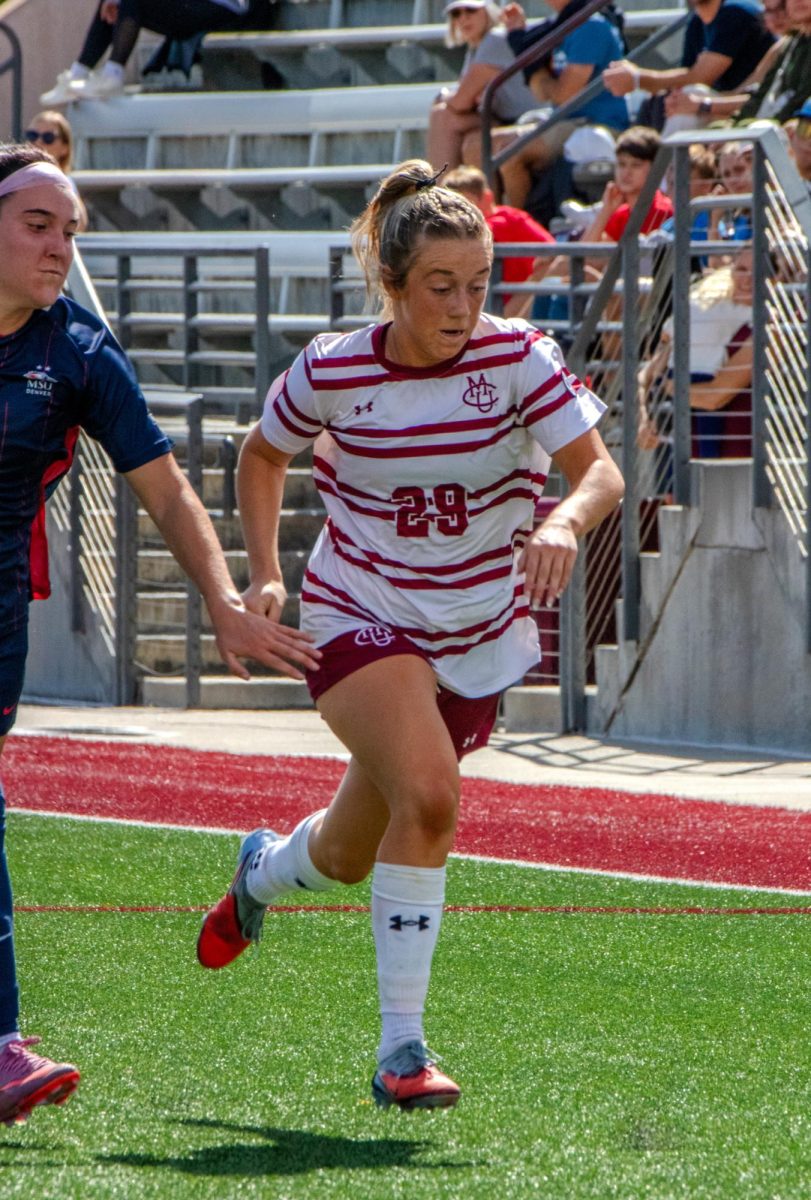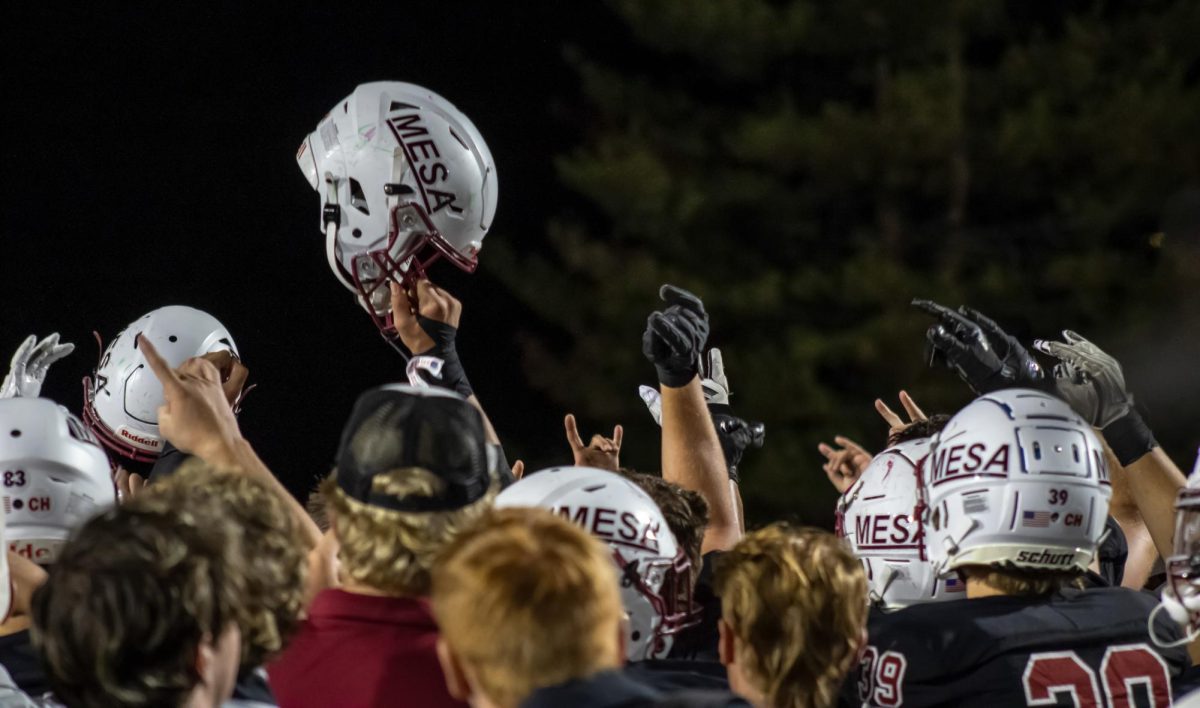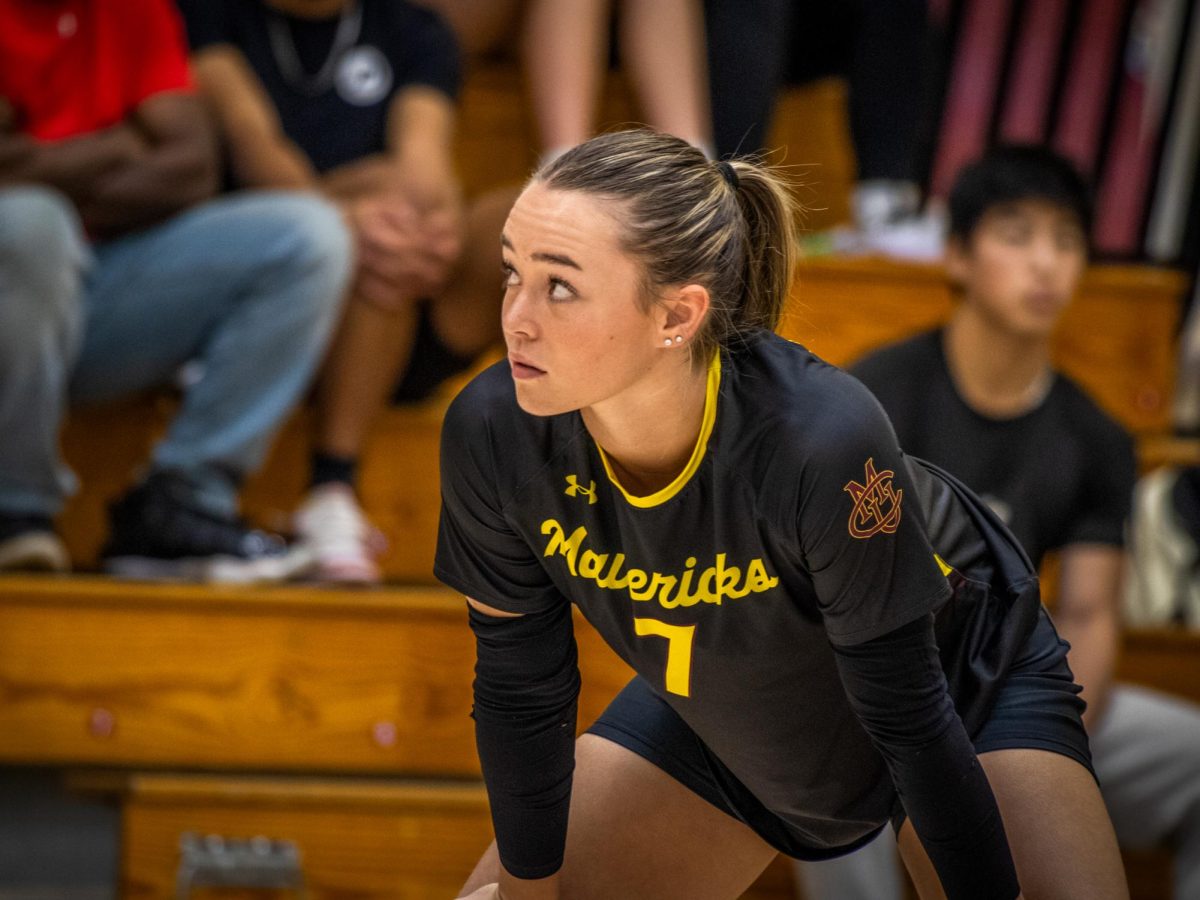While many students focus on football, basketball and soccer, some may not have realized that over these past few months, a new sport was added to the athletic program at Colorado Mesa University. That sport is the triathlon, which in its most popular form, is a succession of swimming, cycling and running.
The athletes who participate in this sport are competing for the fastest time on any given course, which includes the time it takes to swim, cycle and run, as well as the transitions in between. Every second matters.
Geoff Hanson, who also serves as the head swimming and diving coach, has taken on the job of coaching these teams.
“I think it’s something the department has been planning on for awhile,” Hanson said. “I think President Foster was really supportive of it; he’s been a part of the triathlon scene himself for a lot of years. So he was all for it, and it was our former athletic director Tom Spicer who made the push. The women’s side is starting up based on a USA Triathlon grant fund, so it’s geared toward building the sport and turning it into a NCAA sport.”
There are currently only 14 women’s teams in the country, and within the next four to five years there need to be 40 teams total in order for triathlon to be a true NCAA-sanctioned sport. Right now, it is considered an emerging sport, meaning that it is intended to help schools provide more athletic opportunities and more sport-scholarship options.
Since the sport is new to CMU, the typical recruiting process for athletes was a little different than normal. The introduction of the triathlon teams was announced late last spring, shortening the recruiting period.
“I just opened it up to the campus and we have a couple of freshmen boys who were former swimmers […] And then it’s made up largely of students who were here on campus who are either former swimmers, former runners, former cyclists, or a combination of those,” Hanson said. “Now that we’re underway, we’ve got a new recruiting cycle so that for the fall of 2018 we should have a good recruiting class, of women especially, who are at the Junior National level of triathlons, who are true triathletes, who will come in.”
Most competitive triathletes know where they’re going to school by the time spring comes around, so Hanson had to take an alternative route to get the team going.
Right now, the only major difference between the women’s team and men’s team is that as of now, the women’s team is classified as a NCAA emerging sport, while the men’s team is a club sport. However, this has no impact on how Hanson treats both the men and women.
“The women’s team is, like I said, funded through a grant and is considered a NCAA emerging sport, so we’re trying as best we can to treat them both the same. The men’s team is a club technically, but is under the athletic department and the NCAA umbrella […] we’re trying to keep them along that same path [in terms of expectations and guidelines],” Hanson said.
Because of the difference between a NCAA sport and a club sport, it means that scholarships are offered on the women’s side, but no scholarships are offered on the men’s side.
Even though the beginning of this season may seem different compared to the other sports seem on campus, the expectations and goals are just the same.
“It’s more just about individual improvement, because like I said everyone’s coming from a different background, so I think over the 11 weeks left of the season we’ll improve,” Hanson said. “The team is a really good group who’s come together over what’s just been only about a week and a half of practicing. Just to have fun with it, establish it and then really start working on our recruiting so that we can continue to grow the program.”








